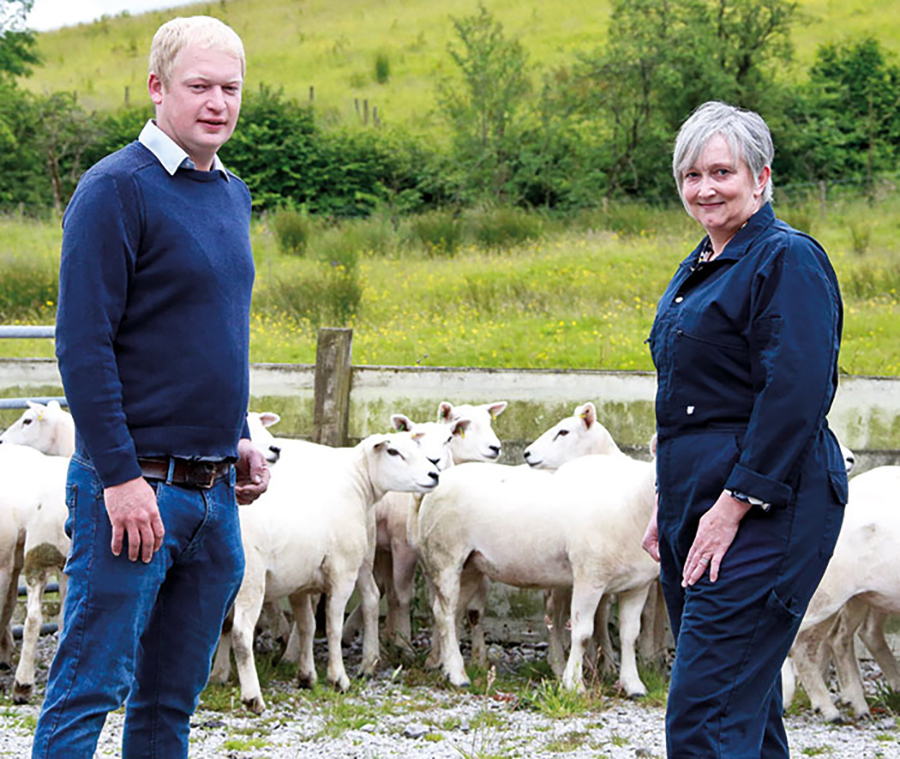New flock health mindset reaps dividends
1st August 2024
Preventing disease and adopting treatment strategies based on data has helped one Lancashire hill farm to boost scanning rates and improve flock health.

For Mick Handley, signing up to Dalehead Veterinary Group’s Flock Health Club proved the turning point for adopting a new mindset to flock health, supported by vet Karen Swindlehurst and fellow shepherds.
Improvements in flock health have focused around the following five areas…
Fluke control
High rainfall means fluke infection is a big risk for farmers across the area and was highlighted as one of the main areas for immediate attention through the Flock Health Club. Mick and his father, Malcolm had always treated sheep for fluke four times in the winter: pre tupping, when ewes went to the fell post-tupping, at scanning and at lambing. However, they were suspicious that treatment wasn’t working.
“We had a couple of rough winters and ewes in poor condition with scanning results around 115% for the hill ewes,” Mick recalls.
Through testing, Karen identified that the flock had resistance to triclabendazole, which was being used in the flock. Karen also began using the farm as a sentinel unit to identify when fluke was emerging in a season and allow more effective, targeted treatment. Now, six lambs are blood tested every four weeks from around September.
“With testing we have managed to reduce this (fluke treatment) to as low as two doses this past winter and seen an increase of 15–20% in scanning results since starting the testing,” says Mick.
Karen adds: “If we dose at the right time, it makes a big difference to body condition, fertility and scanning rates. And we’re not blanket treating when we don’t need to.”
The type of flukicide used is also varied through the season depending on the age of fluke identified to achieve the best outcome using vet advice.
Better understanding of worms
Rather than routinely worming every 6–8 weeks through the summer, the Handleys now make treatment decisions based on faecal egg counting (FEC), which is carried out through the Flock Health Club. Testing has also identified resistance to white drench.
Mineral status
Having identified cobalt deficiency through blood testing, all lambs now receive a vitamin B12 injection in June. Ewes also receive a cobalt bolus and a copper bolus pre-tupping. Mick says improved mineral status has been reflected in improved lamb thriftiness. “We think lambs are continuing to thrive better, grow better and there are not as many poor doers,” he says, adding that they’re probably also getting more lambs to a saleable weight, and quicker.
Vaccinating
As part of the disease prevention strategy, the flock is vaccinated against a number of key diseases. All in-bye ewes, which lamb indoors and are subject to higher stocking rate pressures, are vaccinated against enzootic abortion.
All new breeding females are enrolled on a Heptavac P Plus vaccination programme and receive two doses 4–6 weeks apart, followed by an annual booster. Lambs are also vaccinated against key clostridial diseases and pasteurella using Ovivac P Plus.
Reducing lameness
Adopting the FAI Farms Five Point Plan for controlling sheep lameness has enabled Mick to reduce lameness to manageable levels, with work ongoing. Following veterinary guidance, lame sheep are now identified and treated promptly either with a topical spray or an appropriate injectable antibiotic, depending on the degree of lameness. They will then be managed in a separate field until lameness is resolved.
“Before we would have left them running with the flock and foot bathed and sprayed them, but it would have taken them longer to improve, and some might not have come right,” Mick says.
Treatments are recorded using EID and any animals that are treated 2–3 times will be culled. The fixed handling system will also be washed and disinfected between mobs, and lime mixed with the sawdust used in the handling pens to reduce infection spread.
All in-bye ewes and wintering hoggs are vaccinated against footrot using Footvax once a year, although Mick is considering moving to six monthly vaccinations on Karen’s advice. The 4–5 stock tups bought in annually will be quarantined for a minimum of three weeks and vaccinated. Mick adds: “Lameness in the tups has been reduced now we use Footvax every six months because we found they were the highest risk group,” Mick explains. “It means less tups are required as they cover more ewes and they’re more viable.”
Use of the vaccine should also help reduce antibiotic use.
Read more livestock news
